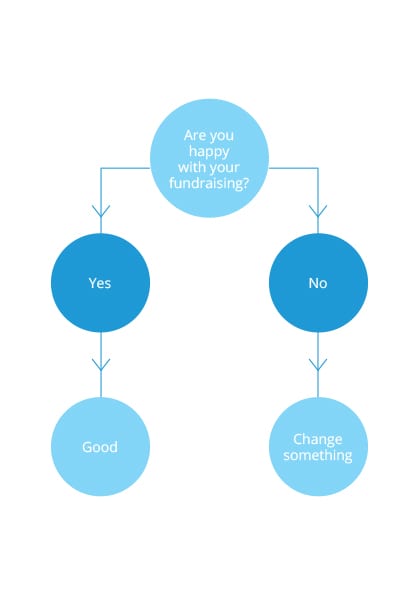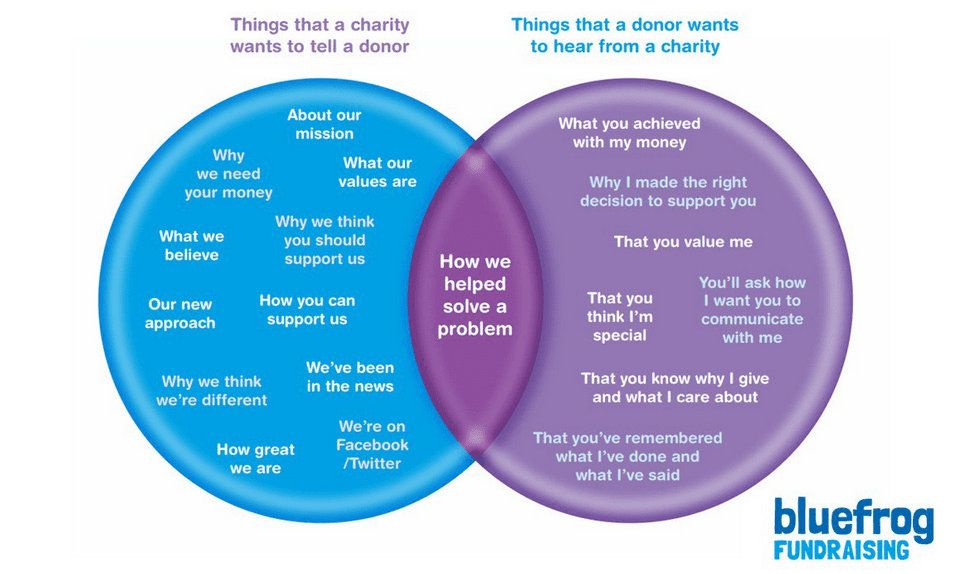The fundraising decision making flow chart
At the heart of any fundraising programme lies a plan.
That plan identifies an audience, details what they will receive, through what communication channels, timings and what actions the recipients will hopefully take.
They can be hefty documents akin to a telephone directory or something a little more accessible. The Children's Society for example, has been able to refine their fundraising strategy to the point where it fits on a business card.
But no matter what size, a plan is essential. And if you are currently looking at your charity's fundraising plan for the next financial year, you might find this flowchart useful. We use a similar one at Bluefrog to help charities break free of the but that's how we've always done it syndrome.
 As you'll see, if you have legions of fully committed donors who give to every appeal and have pledged huge legacies you carry on just as you are.
As you'll see, if you have legions of fully committed donors who give to every appeal and have pledged huge legacies you carry on just as you are.
But if your charity's income is flatlining or in decline, if your second gift rate is poor, if your expensive new donors are leaving you, if your direct debit attrition rate is far too high or your legacy pool is shrinking, this flowchart might just help you to make a very difficult decision.
To do something different.
All too often, change (at either a tactical or strategic level) is doing the same thing in a different guise.
After all, a request for a cash gift, a direct debit, an SMS gift or even a legacy is still just a request for a gift.
As a result, many strategic plans are often underpinned by fundamentally very small changes which result in simply asking for a gift in a slightly different way. Perhaps three of the most popular approaches are...
- Asking for smaller gifts
- Asking more often
- Asking people to give to a different area of work (often following a rebrand)
And because the strategic change is so small, it rarely generates much positive impact. As a result, it can be soon forgotten and another round of consultation takes place that will have the much the same result.
So what change will make a difference? What can be done without a major strategic overhaul that can make a real difference to the bottom line?
Here are four suggestions that are worth looking at.
1. Put recruitment and development in the same team
It can seem a sensible division to make. One team focuses on recruitment. Then once the new donor is signed up, they are handed over to the development team who manage the relationship from then on.
The trouble is, if you are judged on how many people you bring through the door and at what cost, you might not be that focused on the long-term potential of your new recruits. The result is that the development team can find themselves struggling with donors who simply aren't interested in any sort of relationship.
All acquisition should be focused on donors that are going to keep on giving. By having recruitment and development as part of a single process, the focus remains very firmly on the long-term.
2. Thank well
One of the simplest ways to improve retention is to look at your thanking programme. Keep your thank you letters fresh and different. Keep updating them and make them relevant to each appeal. And thank in real time too. If you have an email address on file consider thanking donors twice – once via email as soon as the cheque arrives and then by post as soon as your systems allow. And whenever you can, add a handwritten comment. It makes a huge difference to lifetime value.
And don't forget the telephone either. Penelope Burke found that donors who received a thank you call within 24 hours of the receipt of their gift were 39% more likely to give again than those who weren't called.
3. Asking again when you thank
Don't be frightened of offering people an opportunity to give again in thank you letters. It might not be for everyone, but I've seen response rates of up to 26% from a well constructed thank you. This piece on asking again from Derek Glass is worth a read. It can dramatically improve life time value and retention.
4. Don't make giving easy. Make it attractive.
There's a great deal of talk about making giving easy. Of giving people the chance to give without hassle. A very low value ask, a simple click button on a website or a text giving option can all help in driving response. But don't stop there. Rather than build strategies around making giving easy, focus on what will make giving attractive. The question that any great fundraiser needs to answer is what will encourage a donor to give more?
Tags In
The Essentials

Crack the Code to Regular Giving: Insights, Strategies, and a Special Giveaway!

‘Tis Halloween. Keep to the light and beware the Four Fundraisers of the Apocalypse!

Why do people give? The Donor Participation Project with Louis Diez.

A guide to fundraising on the back of a postcard

What does the latest research tell us about the state of fundraising?







